The Sicilian flora is characterized by many endemic species. They make up about 10% of the island’s plant species. In this article we want to tell you about some of the special plants that grow on Etna. Because anyone who thinks Mount Etna is a barren, lifeless stone desert is wrong. Etna provides habitat for a variety of animals and plants and is home to some endemic species. On its slopes you can find plants up to an amazing height.
Who colonizes new lava?
A lava flow destroys everything it buries underneath. It takes years for new life to begin again. Lichens settle first, then flowers and grasses. Only after decades does a forest grow again. Therefore, one can estimate the age of the lava by looking at the plants that grow on a lava flow.
A fresh lava flow is black when it has cooled. As time goes by, it gets lighter and greyer. This is due to the weathering but also to the lichen Stereocaulon vesuvianum, which begins to colonize the lava after about 9 to 10 years.
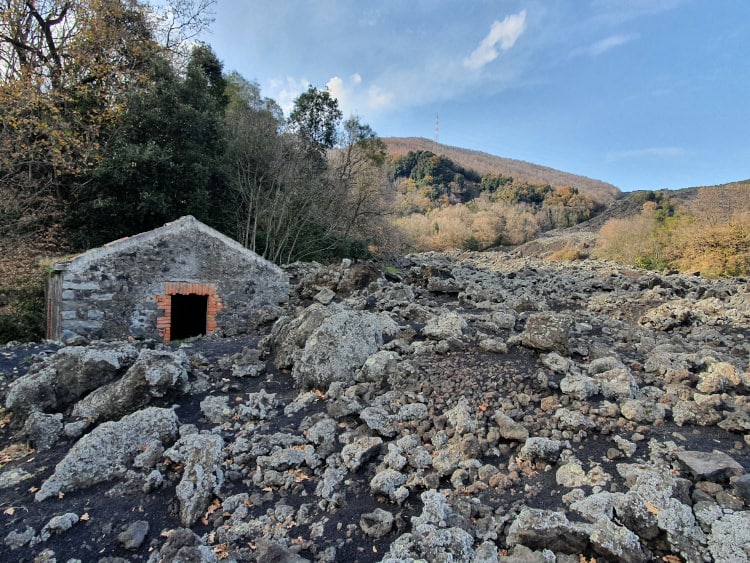
In the image above you can see the 1993 lava flow at Zafferana Etnea. The stones covered with the greyish lichen come from the 30-year-old lava flow. The black lava between the stones is fresh ash that fell this year.
The trees in the middle of the lava flow are not new, they were spared from the lava flow 30 years ago.

In the picture above you can see the lichen Stereocaulon vesuvianum close up. It is a symbiotic community between a fungus and an alga.
The lichen contributes to the weathering of the lava and forms new biomass on which other plants can then thrive.
The flowers and herbs of Etna
Rumex aetnensis (sorrel or dock of Etna)
The genus dock bears the Latin name Rumex. Many of you probably know the common sorrel (also called spinach dock and narrow-leaved dock). Even the Romans chewed the fresh leaves of the sorrel. This increases the production of saliva and thus helps against thirst. This is where the name comes from: the Latin word ruminare means to chew or ruminate. The sorrel also contains a lot of vitamin C and was used as a remedy against scurvy.
On Mount Etna we find – up to an altitude of 3000 meters – the endemic species Rumex aetnensis (a subspecies of Rumex scutatus – the shield-leaf dock). It is thus the plant growing at the highest altitude that we find on Etna. You can taste its leaves on our tours and admire its pretty red flowers between May/June and August.
The Etna dock grows on flat soils, preferably on volcanic sand or loose material and is therefore of the greatest importance for the colonization of new lava.
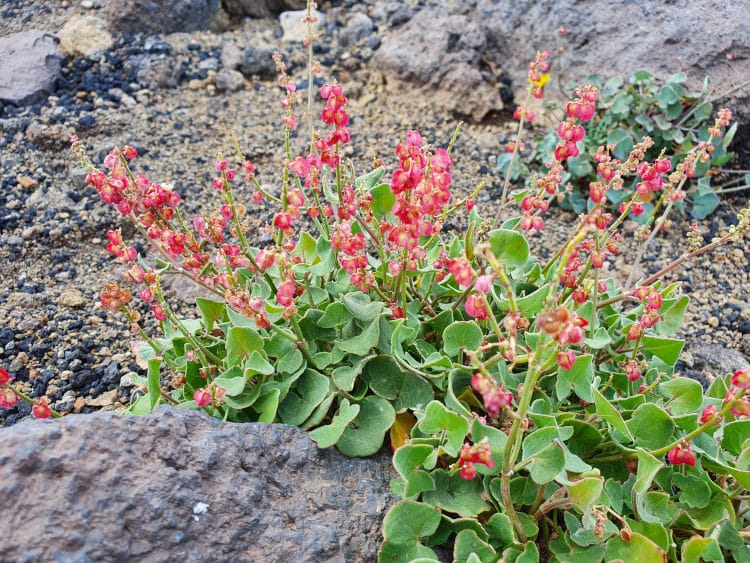
Now we have also learned what addition all endemic plants of Etna carry: aetnensis
Etna Chamomile (Anthemis aetnensis)
Etna chamomile thrives on Mount Etna at an altitude of 1700 to 2900 meters, sometimes even higher. It doesn’t grow as tall as German chamomile, only about 25 cm. The stems branch right off the ground, often giving it a bushy appearance. In the case of real chamomile, the stems are usually heavily branched in the upper area. In contrast to German chamomile, Anthemis aetnensis is also perennial. It flowers in July and August.
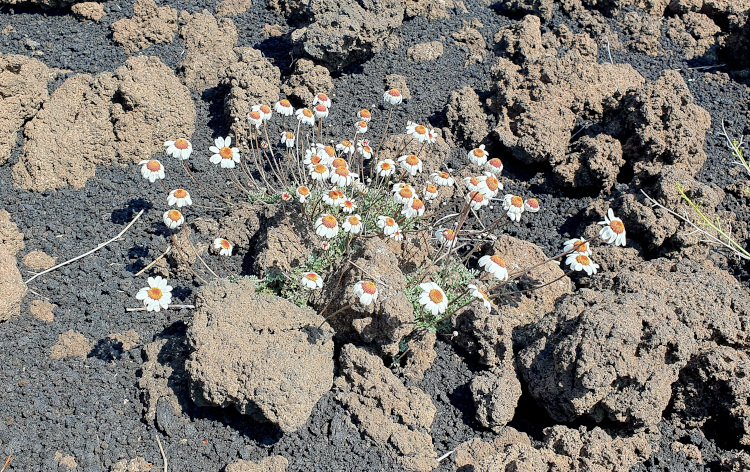
Saponaria dell’Etna – Soapwort of Etna
One of Etna’s most famous flowers is the Saponaria dell’Etna (scientific name Saponaria sicula). This soapwort can be found on Mount Etna up to an altitude of 2300 meters. It also grows in parts of the Madonie (a mountain range in the middle of the north coast of Sicily). It blooms beautifully pink from June to August and often grows in cushions that contrast with the black lava and anchor Etna’s sandy, steep slopes.
The Saponaria is the emblem of Etna Park. On the park’s coat of arms you can see a small pink flower on the bottom left.
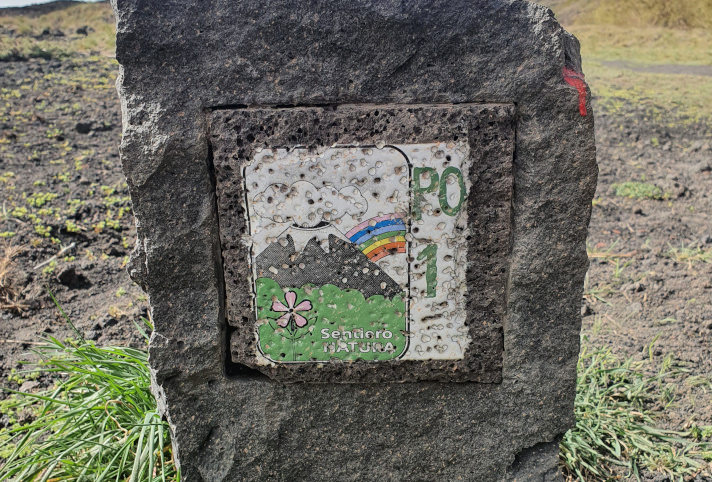
All parts of plants, but especially the roots, contain saponins. Soapwort was already used for cleaning in antiquity and in the Middle Ages, as was Saponaria dell’Etna. Today she is protected as a resident of the Etna Natural Park.
In Catania it is said that Aphrodite, the goddess of love and beauty, placed these cushions on Mount Etna to remind everyone that love and beauty can flourish even in the greatest impassability and disgust. Some also claim these delicate pillows are the beds of fairies, gnomes and other wondrous creatures.
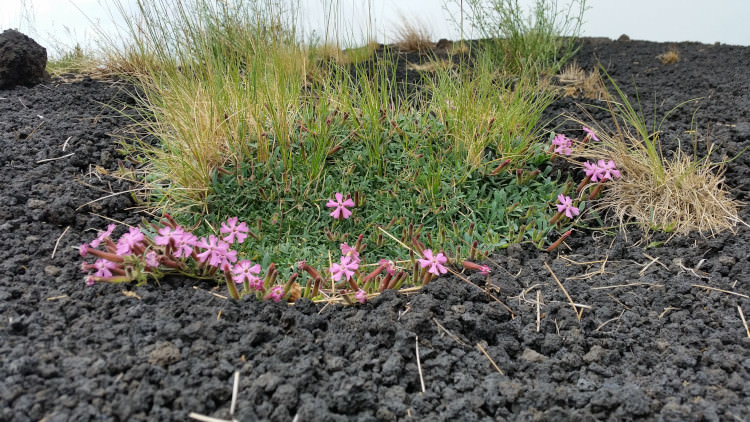
Astragalus siculus (also: Astracantha sicula)
If you undertake a hike on Mount Etna, you will discover large green cushions (30 to 60 cm high and up to 2 meters in diameter) on the left and right of the path, especially on the north side, which invite you to rest during the strenuous climb. Partly the whole slope is dotted green. But beware: the cushions of the Astragalus siculus may look comfortable, but they have long spines. That’s why the guides on Mount Etna jokingly call them mother-in-law’s pillows… In Italian they are called spino santo – holy thorn (a reference to Jesus’ crown of thorns).
The fine lava sand collects in the cushions and they provide shelter for some insects and a habitat for other plants.
Astragalus siculus belongs to the plant genus Astragalus, which in turn belongs to the subfamily Faboideae within the legume family. It grows exclusively on Mount Etna between 1700 and 2450 meters and blooms between May and August with small, inconspicuous flowers.
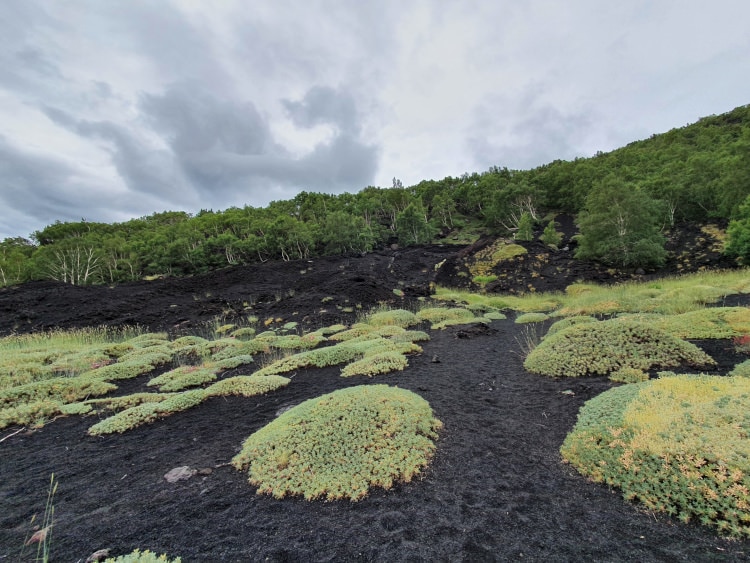
A picture from our Etna North Tour, where we get to know the varied and unknown north of Etna.
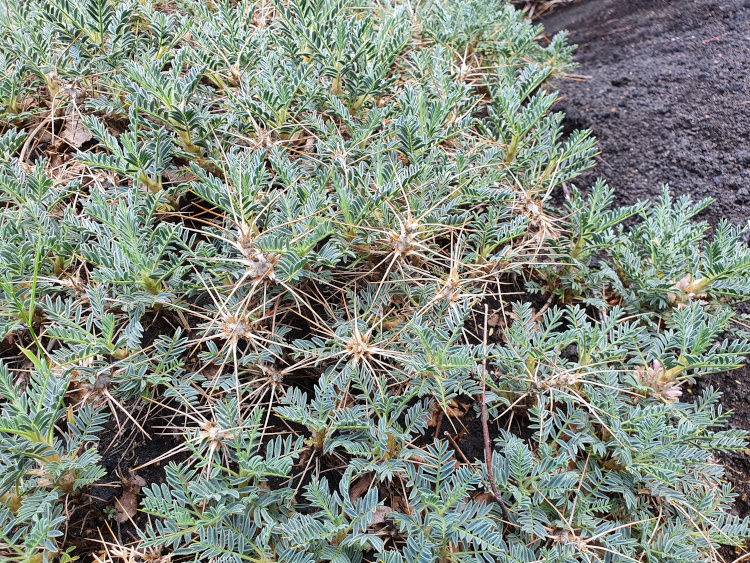
The thorns of Astragalus siculus up close.
Now we come to the larger plants of Etna.
Etna broom
Etna broom ( Genista aetnensis ) is a plant endemic to Sicily and Sardinia. It blooms bright yellow from June to July and exudes a wonderful fragrance. The Etna broom can reach more than 5 meters high, while other broom species only reach 2 meters high.
It grows as a shrub or (heavily branched) tree up to an altitude of 2000 meters and, as a pioneer species, has the task of preparing the ground for other, more demanding plants.
Until the creation of the Etna Park, charcoal was made from the wood of the Etna broom. You can still find references to this in the names of some paths (Via dei carbonai, road of the charcoal burners). Its flowering branches were also used to dye wool or silk yellow. The twigs were also used to make brooms. That’s where he got his name from.
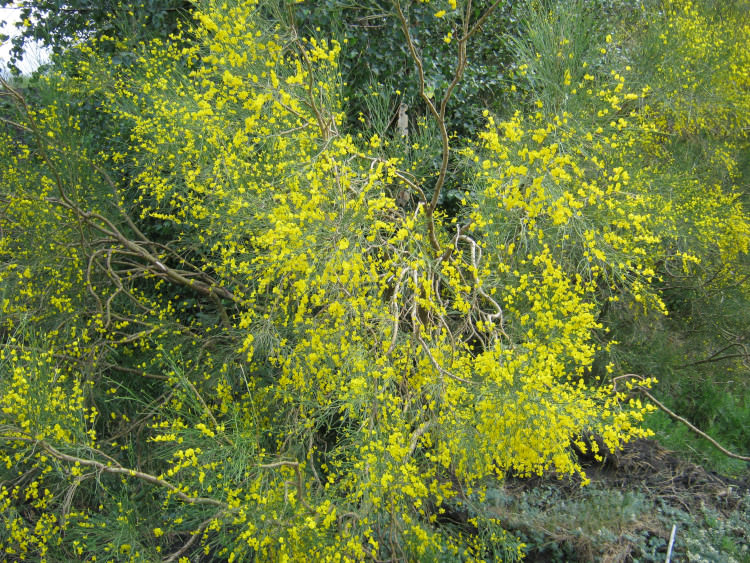
The magical birch forest
During our hikes on the north side of Mount Etna, we walk through an enchanting birch forest full of white-silver smooth trunks. The Etna birch, Betula aetnensis, unlike the normal birch, can have multiple trunks and reaches a height of 4 to 15 meters. You can find them between 1300 and 1900 meters above sea level, above the Rifugio Citelli and near the Sciara del Follone even up to 2110 meters.
In the past, a (very expensive) paper was made from the smooth bark of the tree. Now, of course, that’s no longer allowed. Like all plants on Etna, the Etna birch is protected because Etna is a natural park.
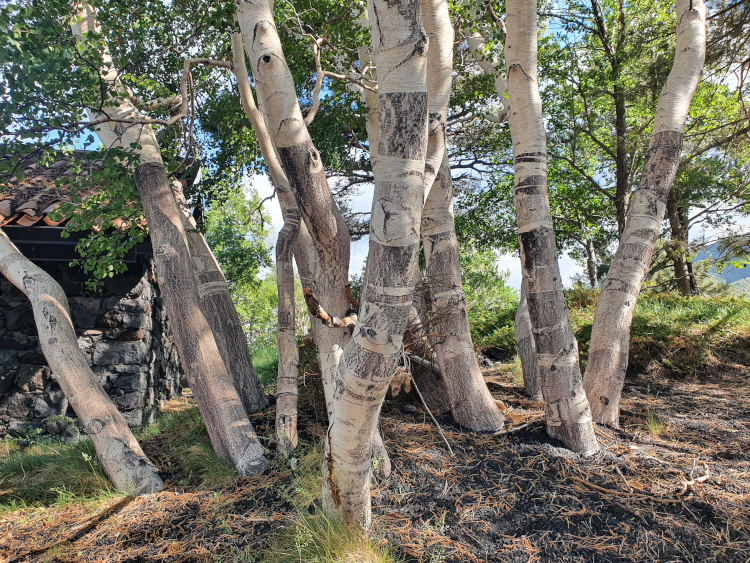
On the trunks of older birch trees, you can still see the places where the bark was stripped off for paper production.
But why do we find birch trees so far south? Betula aetnensis arose during the last ice age (Würm glaciation) and also spread to Sicily. After the end of the Ice Age, the plant withdrew to the north, only on Mount Etna a stock survived due to the cooler and rainier climate than in the rest of Sicily. This adapted to the special conditions on a volcano and thus developed differently from its relatives in the north and became endemic.
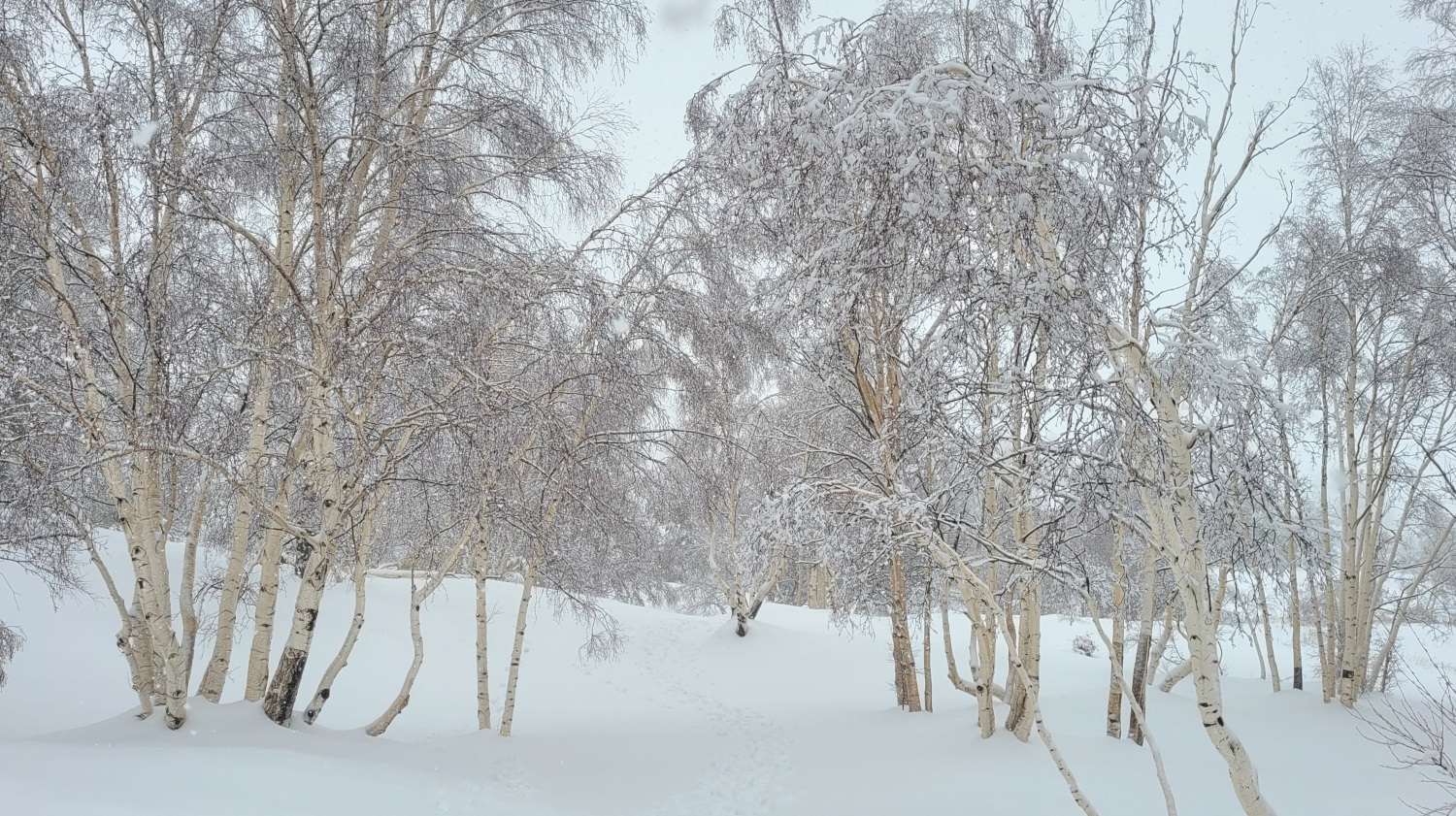
A white winter landscape with birches. Who would have thought that there was something like that in Sicily!
If you want to learn more about Etna’s plants and see them with your own eyes, then book a hike on the north side of Mount Etna. In recent years and decades, eruptions have mainly taken place on the south side. So there is a lot of new lava there, we walk through a black lunar landscape.
In the north, on the other hand, nature had time to reclaim the volcano. On our Etna North Tour we hike through the different vegetation zones and discover all the colors of Etna.



